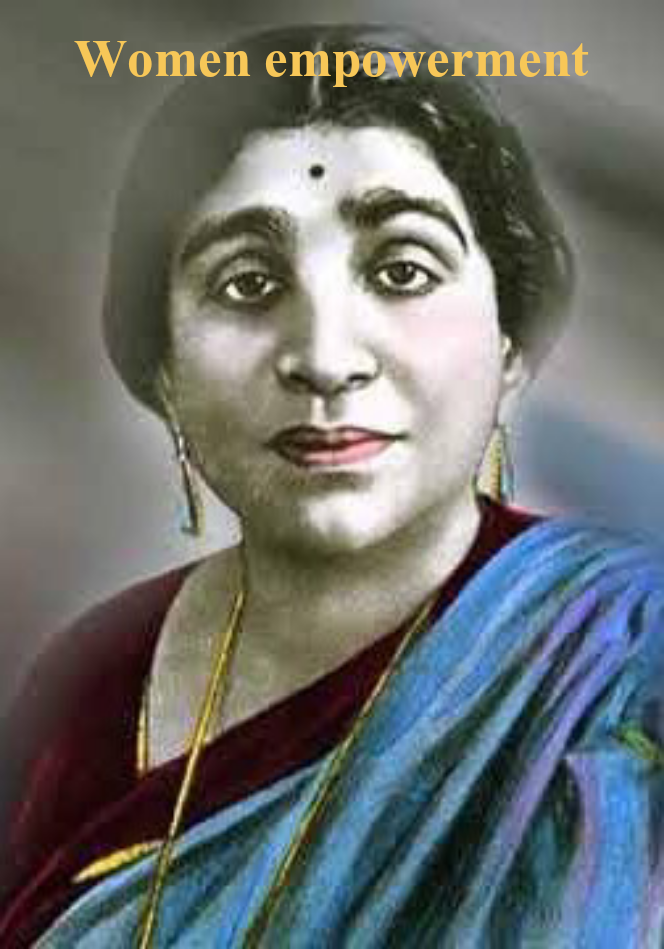Women Empowerment
Women Empowerment


We know about Gandhi, Nehru, Bhagat Singh in our study of the Indian Freedom struggle movement. When it comes to women, we only speak about Rani Laxmibai’s contribution to the revolution of 1857.
However, other women freedom fighters contributed heavily to the Indian Independence Movement. Amongst the women who contributed to the independence of India, Sarojini Naidu is an underrated name. Sarojini Naidu was not only a freedom fighter but also one of the eminent women poets of India. She is also given the title of ‘Nightingale of India’.
Naidu was born in Hyderabad on the 13th of February 1879 to eminent linguist Aghornath Chattopadhyay and his wife Barada Sundari Devi, a Bengali poetess.
Her father was also one of the first members of the Indian National Congress in Hyderabad. Sarojini Naidu was an intelligent student who showed fluency in Urdu, Telugu, English, Bengali, and Persian.
At the age of 12, she received fame by topping the matriculation exams of Madras University. This leads her to receive a scholarship from the Nizam of Hyderabad to study abroad.
Naidu was interested in writing poetry, while her father wanted her to be a mathematician.
Sarojini went to study in England where she met famous literary laureates such as Edmond Goose and Arthur Symons. Goose suggested that Naidu should use Indian themes in her poetry work. Naidu expressed the life and events of modern India through her poetry. Her works- 'The Golden Threshold’ (1905), ‘The Bird of Time’ (1912), and ‘The Broken Wing’ (1917) found readership in both India and England.
Sarojini Naidu had an intercaste marriage with Dr. Muthyala Govindarajulu Naidu, a South Indian doctor.
Under the Brahmo Marriage Act (1872)Contribution in the Indian Independence StruggleNaidu became part of the independence movement by showcasing her oratory skills. She advocated for women’s rights and their empowerment. As the partition of Bengal began in 1905, she connected with eminent leaders of the Indian National Congress.
Between 1915-1918, she excelled in delivering her oratory skills about the social welfare of women. She encouraged women to step out of their homes and fight for the independence of the country.
In 1917, Naidu accompanied Annie Beasant, the president of the Home Rule to advocate for women’s suffrage in front of the Joint Select Committee in London. She also showed support for the Lucknow Pact, a joint Hindu-Muslim demand for British better political reform.
The same year, Naidu joined Gandhi’s satyagraha and non-violent movement. In 1919, Naidu also joined the non-cooperation movement as a part of her advocacy against British rule. Naidu also became the first Indian female president of the Indian National Congress in 1925. She was also responsible for persuading Gandhi to let women join the Salt March in 1930.
In 1931, Sarojini Naidu joined the Round Table Conference in London under the Gandhi-Irwin Pact. She was, however, jailed in 1932. For her involvement in the Quit India Movement, Naidu faced imprisonment in 1941.
After India’s independence in 1947, Naidu became the first governor of Uttar Pradesh. She retained office till her death in 1949. Sarojini Naidu has been memorialized at the University of Hyderabad’s Golden Threshold
Women’s Day today also celebrated during 13th February .


























































